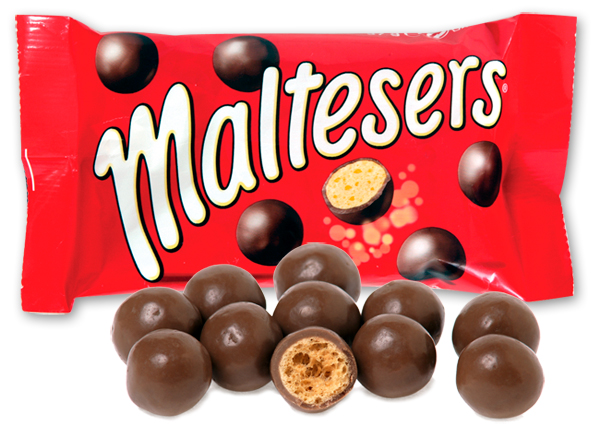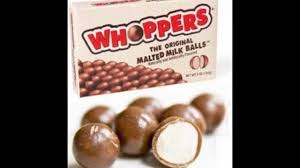I had to look that one up. Never seen one of those before. I love malted milk shakes, and chocolate malted balls. I'll have to keep an eye out for those.
There absolutely delicious.
Don't know why everyone is only into them though.


I had to look that one up. Never seen one of those before. I love malted milk shakes, and chocolate malted balls. I'll have to keep an eye out for those.

hahaha he said he likes chocolate malted balls. i guess maybe a little saltiness probably adds another dimension of flavor?

My take on why IPA's are so popular. (Besides hops are awesome!)
There are man, many hops to choose from. There are many hops coming out all the time. Brewers want to experiment and try different things.
So there are many, many combinations of hops and grains, and whatnot to experiment with. It's harder to experiment with other beer styles because they are usually very limited in the type of hops that they are made with. And when you do experiment with different hops, then it almost becomes an "IPA" be default, just because you used different hops than expected.
IPA is such a broad style, it's very easy to call something an IPA. Much harder to stretch the ingredients of most other styles.
Over time, their tastes evolve and they discover various Stouts, Porters, Barley wines.















Well,
I like to brew what other people like, I get great joy in sharing my homebrew. I like to brew often. Pale Ale and IPA are what they keep coming back for. I have some other simple stuff alternately on tap, Amber Ale, Red Ale and Stout for instance (all are very good, clean examples of their style), but they are for the most part slowing down the pipeline. I would love to begin learning to perfect a Saison and other more sophisticated beers, but fear that they will contribute to the congestion. My brewery has very limited capacity!!
And my wife and I really like IPA!!
My take on why IPA's are so popular. (Besides hops are awesome!)
There are man, many hops to choose from. There are many hops coming out all the time. Brewers want to experiment and try different things.
Other traditional styles, such as dark English milds and ambers and porters and the like--delicious as they may be when done well--don't interest as many people in the expanding craft beer demographic because all they are is plain old good beer, with absolutely zero "hip" factor.
It is a pendulum swing...the Macro-beer drinkers get sick of the watery, fizzy, tasteless swill, and they discover a different kind of beer, usually a Sam Adams, sometimes a Hacker-Pschorr. I call these the "gateway-beers". This leads them on a journey, and often this journey takes them on the pendulum swing down the path of the IPA simply due to the hunger for massive flavor.
What's weird is that I came into the craft beer scene backwards. I was a wine drinker who was given an Abt 12 and had the "THIS IS BEER???" reaction. I soon began discovering tripels, saisons, hefes, etc. High IBU's tasted soapy to me at first.
Nowadays, if you measured my intake in gallons, you would find that probably 40-50% of what I drink is high IBU's. But, if I made a list of what beers I've had over the last 6 months, I doubt if 20% on that list are IPA's. (Probably even less, really.) The reason is, I have a few go to IPA's and don't need to stray from them much. If I am in the mood for hops, and there's a Jai Alai in the fridge, I'm fine. But, if I'm buying a saison, it probably won't be what I had last. .
I would rephrase the question...
Why is everyone only into lagers?
I would rephrase the question...
Why is everyone only into lagers?

hahaha he said he likes chocolate malted balls. i guess maybe a little saltiness probably adds another dimension of flavor?

Clean, crisp and refreshing. As much variation as IPAs, although not as bold.
For what it's worth, even my IPAs are lagers now.
Something like 90% of beer drinking in this country is this crappy style of "lagers", not IPAs. Are you really going to defend this practice?
I will defend it. It may not be YOUR favorite type of beer, but there are plenty of people who do like it. Recognize it for what it is - clean, crisp, not filling. The reason the lighter lager styles are so popular worldwide is because that is what the vast majority of people prefer.
I beg to differ.
Lagers are in general much more narrow and one dimensional than Ales.
Even if you compare all Lagers to Pale Ales - from Pale Ales to Double IPAs, I suspect ales still win but its sort of like "all pies against tiramisu" type of competition - not fair at all.
Besides, I suspect the question was - why do people like crappy light lagers so much - budweiser, miller, coors etc.?
Something like 90% of beer drinking in this country is this crappy style of "lagers", not IPAs. Are you really going to defend this practice?
Sorry but I know a lot of people who are only into and drink IPA's. Nothing else
Sorry but I know a lot of people who are only into and drink IPA's. Nothing else